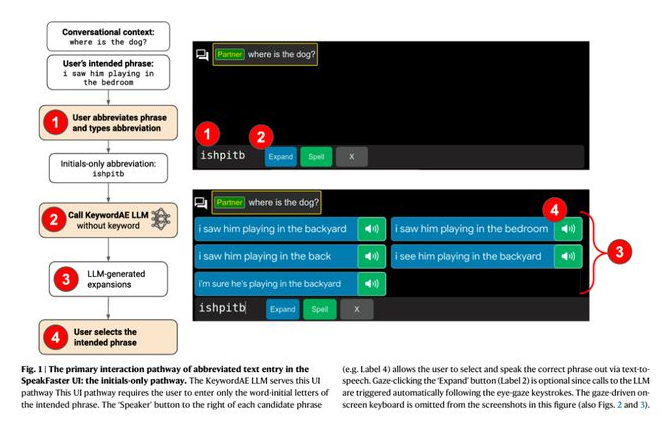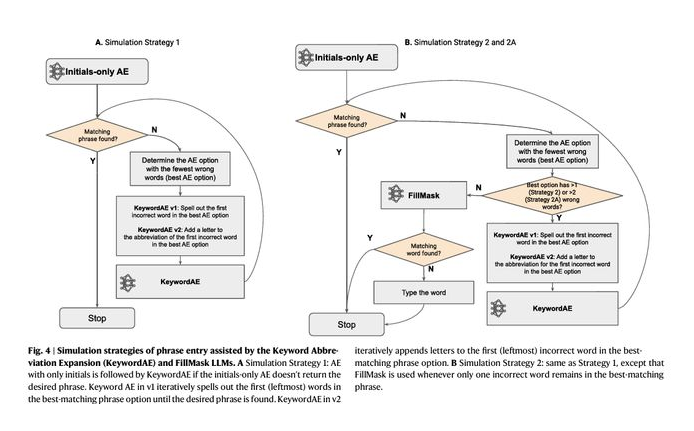Google's Innovative AI Tool, SpeakFaster, Helps ALS Patients Significantly Reduce Eye-Tracking Typing Operations
With the difficulties in daily communication for patients with motor disorders such as Amyotrophic Lateral Sclerosis (ALS), traditional assistive communication tools often fail to efficiently address the eye fatigue and high time cost caused by frequent key presses during the eye-tracking typing process. To solve this problem, the Google research team has developed a user interface (UI) called SpeakFaster, which utilizes large language models (LLM) and conversational context to significantly improve the communication efficiency of ALS patients.

SpeakFaster predicts the acronyms entered by users and expands them into complete phrases based on the conversation context, reducing the number of key presses in eye-tracking typing by up to 57% and increasing the text input speed by 29% to 60% compared to traditional methods. The fine-tuned LLM of this system combines three different input paths, enabling users to easily find the appropriate phrases even when the initial prediction fails, thus speeding up the input process and reducing unnecessary operations.

Furthermore, research shows that SpeakFaster not only achieved significant key press savings in simulation experiments but also increased the typing speed in experiments with ALS patients. Especially in scripted scenarios, the input speed of ALS patients increased by 61.3%. Although the initial learning curve is somewhat steep, most users were able to reach a comfortable typing speed after 15 practice sessions.

Compared with existing technologies, SpeakFaster provides patients with motor disorders with a more efficient and accurate means of communication by combining context-aware AI prediction and alternative input methods, greatly enhancing their social participation and quality of life.